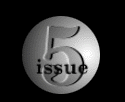|

Barbara Steele as the witch Asa in Black Sunday.
While filmmakers in Mexico (where Fernando Mendez made The Vampire in 1957) and France (where Georges Franju made Eyes Without a Face in 1959) began weaving their horrific tales, Italian filmmakers responded with a flurry of activity. From 1960 through 1966, Italy would create some of the finest, most atmospheric horror films ever made.
After photographing Freda's I Vampiri and Caltiki, The Immortal Monster (an atypical Freda movie that features an amorphous creature not unlike the title creature from The Blob), Mario Bava turned to directing. He had previously directed several scenes in both I Vampiri and Caltiki after Freda had left the sets during disagreements with the producers. Bava specifically responded to Hammer's Dracula: "As Dracula had just been released, I thought I would make a horror movie myself." His first movie, Black Sunday (Italian title: La Maschera del Demonio, "The Mask of the Demon") is quite simply a masterpiece of gothic horror, a film arguably the equal of any horror film ever made. With magnificent set designs that evoke a treacherous world of deep black shadows (akin to the American film noir) and prowling cameras that pull us into the world of deteriorating crypts and musty castle passageways, Black Sunday creates a world of foreboding imagery, a world of near Lovecraftian implications, as the forces of evil are constantly in danger of emerging from the shadows and squeezing life from the living.
Black Sunday would also introduce us to one of the crucial icons of Italian horror: the face of Barbara Steele. Without Barbara Steele, Italian horror might have been very different. Her face, however, captured simultaneously beautiful and demonic features--instantly suggesting a dual and possibly dangerous power of character. With her sharp nose, Joan Crawford-style eyebrows, angular jaw and large eyes, shadows became accentuated on her face. Compare her, for example, with Daliah Lavi in Bava's What (Italian title: La Frusta e il Corpo, "The Whip and the Body"). Lavi's face was filled with soft curves and gentle arches. Her sensual face didn't suggest the wicked duality of Steele. While Lavi's performance in What is one of the finest performances in the golden-age of Italian horror (her eyes, in particular, are marvelously expressive), she didn't possess the iconic features of Steele, who instantly suggested a gentle child-like visage and a perverse, twisted countenance. It's no wonder that Steele would star in many of the greatest movies from this period of Italian filmmaking. A list of her movies is very nearly a list of the greatest Italian gothic movies, including in addition to the aforementioned Black Sunday, Freda's The Horrible Dr. Hichcock and The Ghost, Antonio Margheriti's Castle of Blood and The Long Hair of Death, and Mario Caiano's Nightmare Castle.

Barbara Steele becomes trapped in a coffin in
The Horrible Dr. Hichcock.
Freda's The Horrible Dr. Hichcock does not make use of the duality that her face implies; instead, it gives us Steele as a victim. Yet, the movie is one of the great Italian horror movies. Steele plays the new wife of Dr. Hichcock (British actor Robert Flemyng)--a doctor who injects his lovers with a drug that approximates death. In fact his first wife died (?) during one of their love making sessions due to an overdose of the drug. As Freda preferred, The Horrible Dr. Hichcock contains no monsters: "The most terrifying monster is the neighbor who cuts his wife's throat," he said. He preferred psychological horror, where forbidden passions could enslave and destroy men who otherwise were well-respected within their communities.
Unlike Freda, however, both Bava and Margheriti reveled in the fantastic. Bava gave us vampires in "The Wurdalak" episode of Black Sabbath (Italian title: I tre volti della paura, "The Three Faces of Fear"), alien creatures in Planet of the Vampires (Italian title: Terrore nello spazio, "Terror in Space"), and ghosts in Kill, Baby, Kill (Italian title: Operazione paura, "Operation Fear"), and Margheriti gave us a meteor on a collision course with earth in Battle of the Worlds, vampiric ghosts in Castle of Blood (Italian title: Danza Macabra), and vengeful witches in The Long Hair of Death (Italian title: I lunghi capelli della morte).
page 1 of 2
 
Italian Horror Menu page
Italian Horror: A Brief Introduction
Mario Bava: The Illusion of Reality
Mario Bava's Rabid Dogs
Mario Bava Biography
The Horrible Dr. Hichcock
The Devil's Commandment 
Castle of Blood 
Nightmare Castle
The Bloody Pit of Horror 
Italian Horror in the Seventies
Suspiria
Italian Horror Web Links
Photo credits: Sinister Cinema
|




